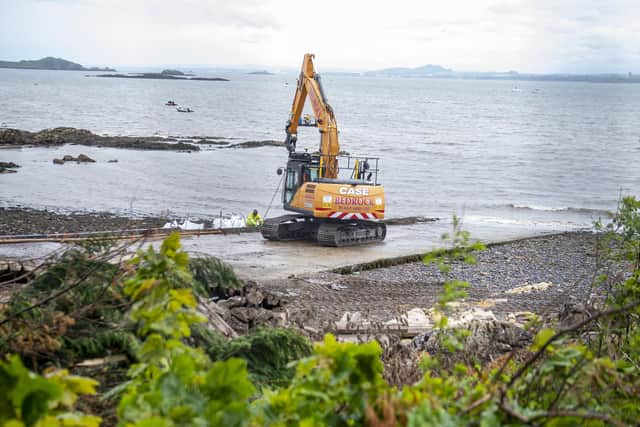Fife shore re-opens to public for first time since 2011 after radiation clean-up
Environment regulator, Scottish Environment Protection Agency (SEPA), said it was satisfied that the work carried out by the Defence Infrastructure Organisation (DIO) and its contractor Balfour Beatty, alongside future monitoring plans and agreed maintenance of rock armour by Fife Council, means the public will be able to enjoy access again for the first time since 2011.
Radioactive material was first detected on Dalgety Bay’s foreshore in 1990 and it took years before work began to tackle the issue. Many politicians, including former Prime Minister Gordon Brown, and local groups pushed for the clean-up to be done.
Advertisement
Hide AdAdvertisement
Hide AdThe contamination originated from the residue of radium-coated instrument panels of military aircraft that were burned and buried at the end of World War II. Investigation works carried out by SEPA identified several caches of particles – with the largest contained within the headland at Dalgety Bay Sailing Club.


The remediation work replaced rock armour around the headland and installed a replacement slipway for the sailing club to ensure that higher activity sources are no longer being eroded out and washed onto the beach, preventing public access to the remaining contamination.
During the two-year project, areas of the foreshore were excavated and processed to remove asbestos and radiological contamination. Around 6500 particles, mostly low activity, have been removed. Work was paused between October and April each year to protect over wintering birds.
The MOD will now complete a two-year programme of monitoring, and SEPA and Fife Council signs advising of the historic contamination will remain in place until this is done. SEPA will then take over monitoring.
Professor Paul Dale, unit manager of SEPA’s Radioactive Substances Team, said: “The completion of this work is significant for Dalgety Bay and for Scotland’s environment. SEPA has been clear in our requirements that remediation would be done once, and it would be done right – providing a permanent and positive resolution for the communities who lived with the environmental legacy of Second World War radium contamination for several decades. “
The end of the work was also welcomed by Fife Council.
Councillor Altany Craik, spokesperson for finance, economy and strategic planning, said: “I’m so pleased the beach at Dalgety Bay will finally be back in use for the public after such a long time. The community has been very patient through all this disruption and I’m delighted that they can finally enjoy the area again."
David Salmond, DIO programme director described the project as “highly complex” and said it encountered “multiple challenges” adding: “That it has been delivered successfully is testament to the excellent collaboration between DIO, SEPA, Fife Council and Dalgety Bay Sailing Club, and the excellent delivery of design and works by our contractors AECOM and Balfour Beatty.”
Mairi McAllan, Cabinet Secretary for Transport, Net Zero and Just Transition said: “I’m very pleased that this work has been completed successfully and that the local community will once again be able to enjoy unrestricted access to Dalgety Bay. I’d like to thank SEPA and all partners for their continued hard work to deliver this and to ensure that access can be maintained in the future.”
Comments
Want to join the conversation? Please or to comment on this article.